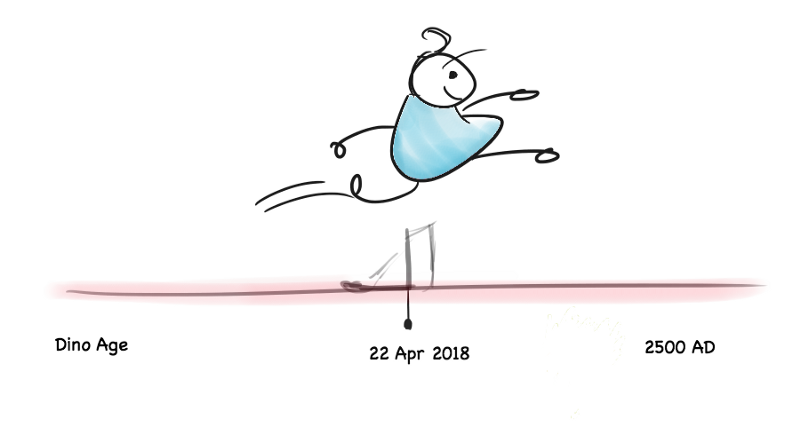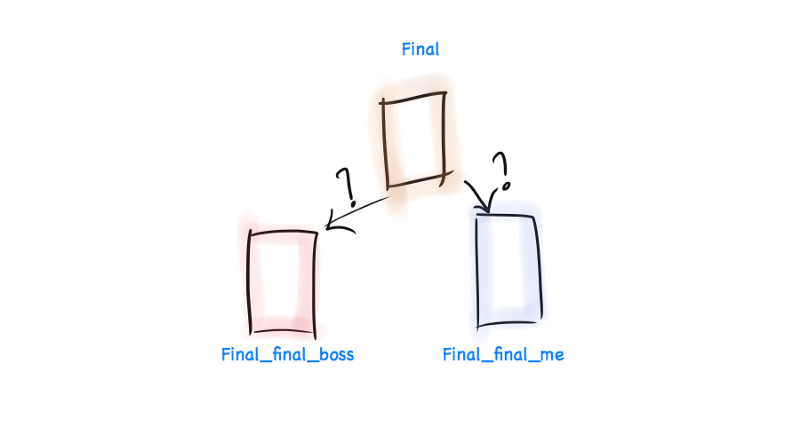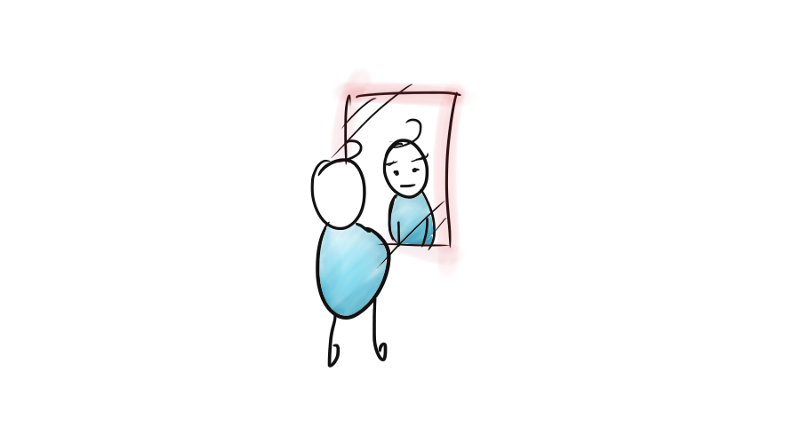On the professional growth of the designer and work with stress. And how to find strength in the most difficult times
- Transfer

Being a designer is great, from whatever side you look. Design is a potpourri from different areas that have one thing in common: solving problems based on user needs and business goals, turning into tangible products. You can be the one who is trying to understand why users continue to press a button that they should not, or those who make custom-made shoes. You can also be someone who designs a cool illustration or someone who designs a house layout.
One has to look at design as a process of creating cool products and constantly engaging thinking, execution, failures and corrections as wheels to experience chariots.
Designer's life is desirable to many. I mean, why not? A designer is a super-creative addict who is free to create anything! They wear shorts to work, flaunt their MacBooks, sip their coffee, traveling the world. This is the life everyone dreams of.
However, things are not always what they seem. Designer's life is not the easiest. His professional growth is a thorny path, which is accompanied by deadlines, timelines and the fact that he is not trying to pull you off balance.

The other side of the pixel coin
Relax! I'm not going to talk here about the new cryptocurrency. I am talking about that part of the life of designers, which is usually hidden from people. This is the dark side of the moon.
Imagine the following ... You work on a project for several days. Your workplace now smells like dried coffee. Your eyes are swollen from the fact that you are eagerly looking through the mail, looking for any line that looks like the phrase "It looks good, let's put it into development."
You put months on this project. You do not get enough sleep. Your attempts to sleep have been shattered by nightmares about lost deadlines, new failures, a different approach. The probability of getting approval looks faded, and it seems to you that you have not achieved anything. At this stage, the source file is edited, bloated to the size of a mammoth. Sketch users, you have 8479349 copies of the same symbol. In other words ...
you are sad, your workplace is sad, even a damn cup of coffee is sad.
And then there are people who want more and more.
It all looks good, can we make the logo bigger? Can we move it slightly left and up? I like the color of Airbnb. Can we use the same?
Let's talk about the sources of stress in the life of a designer.
Formation of ideas
Have you ever puzzled in search of a good idea, and then she appeared like magic on her way to work? Sometimes good ideas never come! There are two types of thinking - vertical and horizontal. Vertical - directed inwards and can be simply directed in one direction, horizontal thinking can cover a huge number of topics and eventually lead to a solution. Although each has its pros and cons, it is important to understand which category you are thinking in.

Vertical thinking is directed inwards and can simply be directed in one direction, horizontal thinking can cover a huge number of topics and eventually lead to a solution.
Stupor in ideas is a real punishment. A good designer is someone who understands the problem, not someone who is in a hurry to immediately open the software and create layouts. Form ideas hard. Getting meaningful, useful ideas from teammates is even harder.
Timing
We have a complex relationship with deadlines. Some like them. Some hate them. Some they charge. Some simply have no choice. The problem is that people use them as a criterion to determine the value of a designer. This often leads to the fact that people are constantly nervous in fear not to meet the deadline. Quality of work cannot be measured by the amount of time. In other words, what appears to be a simple screen change may take longer.

Anyway, deadlines exist. Like it or not. What changes is how we deal with them.
Feedback
What is a design without feedback? Imagine that you need to build a 110-storey building only to understand that all the layouts are wrong? This is exactly what happens when you do not use feedback in the design process.
Feedback is a separate topic. But if in brief, all the actions of collecting meaningful feedback, analyzing and making adjustments are a very tedious process. But it also proved to be a vital design basis.
Alteration
What adjustments should I make? Should I create a copy of this file? (Before - final_finally_bosschanges.sketch). “Can you open the version you showed on Wednesday? I like the color you used ”* tears hair to despair *

How to deal with stress
There are many articles that talk about stress in general. They fit every one of us. In addition to common things, such as thinking about goals, spending time with friends and family, giving thanks, keeping a journal, let's talk about the difficulties of stress encountered in design practice.
Understand yourself
It goes without saying that understanding yourself is the best way to begin to cope with impending stress. What kind of person are you? Do you find solace in talking about your problems? or are you the one who can swallow it and survive? Are you a procrastinator who needs a deadline for a task or do you hate deadlines?

Design does not occur in a vacuum! One thing that will always help you is building relationships with teammates. Communication with colleagues should not always revolve around work. Discuss the interests, aspirations, life that you lead outside of work! Building relationships is an important contribution to the professional growth of a designer.
Celebrate small victories * responsibly
We overly criticize ourselves. This is peculiar to artists. We are simply not satisfied. Always want big wins. This brings us to the abyss of dissatisfaction and desire for this very big victory.

Provided important results on time? Buy yourself a cupcake or a book. Treat yourself to small victories, even if no one else will. Until now, you have done an excellent job, and your body needs this reward.
Does this mean that you are delayed every Saturday? This is where responsibility comes into play. Celebrating small victories is a great way as long as you do not spend a mini-vacation every weekend. The goal is that the reward is not reflected in the work ahead. While vacation beats can afford, and you come to work tired and unproductive, the book can really help open up new perspectives.
Take a project for your own pleasure.
Good, but I'm already bogged down with tasks. How can I take on another parallel project? That's why you need a project for your own pleasure - no matter how lousy your day at the office was, you will still have a “winning” project, that “good thing” that will be waiting for you. It will give you a feeling of satisfaction from doing something else, something more than others.
Personally, my parallel projects have always been online courses. This is an adventure to the unknown. I always come across something new, something fun. It keeps me in good shape, I have something where I can give everything in full.
Talk to people outside your lake.
With constant deadlines and reviews, we often lose self-esteem. Our value compass begins to point in all directions. Explain what a design is to a developer or intern, or someone outside of work. It will bear fruit.
1. You are aware of your value.
The explanation will allow you to understand that your contribution can be valuable. I often entertain my friends with things that I research and tell them about the applications they use on a daily basis. It's worth it.
2. You spread knowledge about design.
I still distort when people ask, “UX design is about developing logos and changing colors in an MS Office document?” All the work on explaining what design is, challenges your mind. It reinforces your own understanding of what you do, and more importantly, why you do it.
“If you cannot explain this to a six-year-old child, you yourself do not understand.” - Albert Einstein
Set the correct expectations
What happens when a waiter brings you a cup of tea, when you actually ordered a cup of coffee? This is almost the same when you create technical instructions for wareframes, and your teammates expect high-quality mockups. Dealing with expectations and meeting them is an important contribution to building relationships and avoiding confusion.
Be clear about what you want to achieve, and when you want to achieve it. More importantly, share your plan with the team. I have seen cases when 30 minutes of delay flow at 4 hours delay for the whole team. So be careful!
Should I report every deviation from my timeline? “The truth is that in most cases, excessive communication will not hurt. And this is where most people make mistakes, they reluctantly warn their team about the changes.
You can be a source of stress for someone else.
Stress is a two-way street. People bring stress to our lives, and we inadvertently do the same. It is very important to be aware of your actions. It's never too late to get better. First of all, we are people, and only then are designers. Here is something that you should not do.
Don't be SO
- Who comments or does something just to do it. Feedback is not an indication of your value. Working towards the goal is important. You could make someone feel lousy for no reason at all, or even worse, just entertain your ego.
- Who wants to question everything just because it can, and wants to look smart. And who doesn't like to look smart? There is a difference between being and looking like that. In most cases, your colleagues will understand this difference.
- “Done?”, “Done?”, “Done?”, “Done?”, “Done?”. Seriously, it sucks. Enough
- In general, the growth of a designer is a whole process. Awareness is the first step to improvement. In addition to these ways to deal with stress, there are others. We must also be sure that we are not a source of stress for others.
How do you handle stress? What dragons do you fight every day? It will be great if you share it with others! Comment can be left below.
Translated by a leading graphic designer, Anna Leshchenko.
